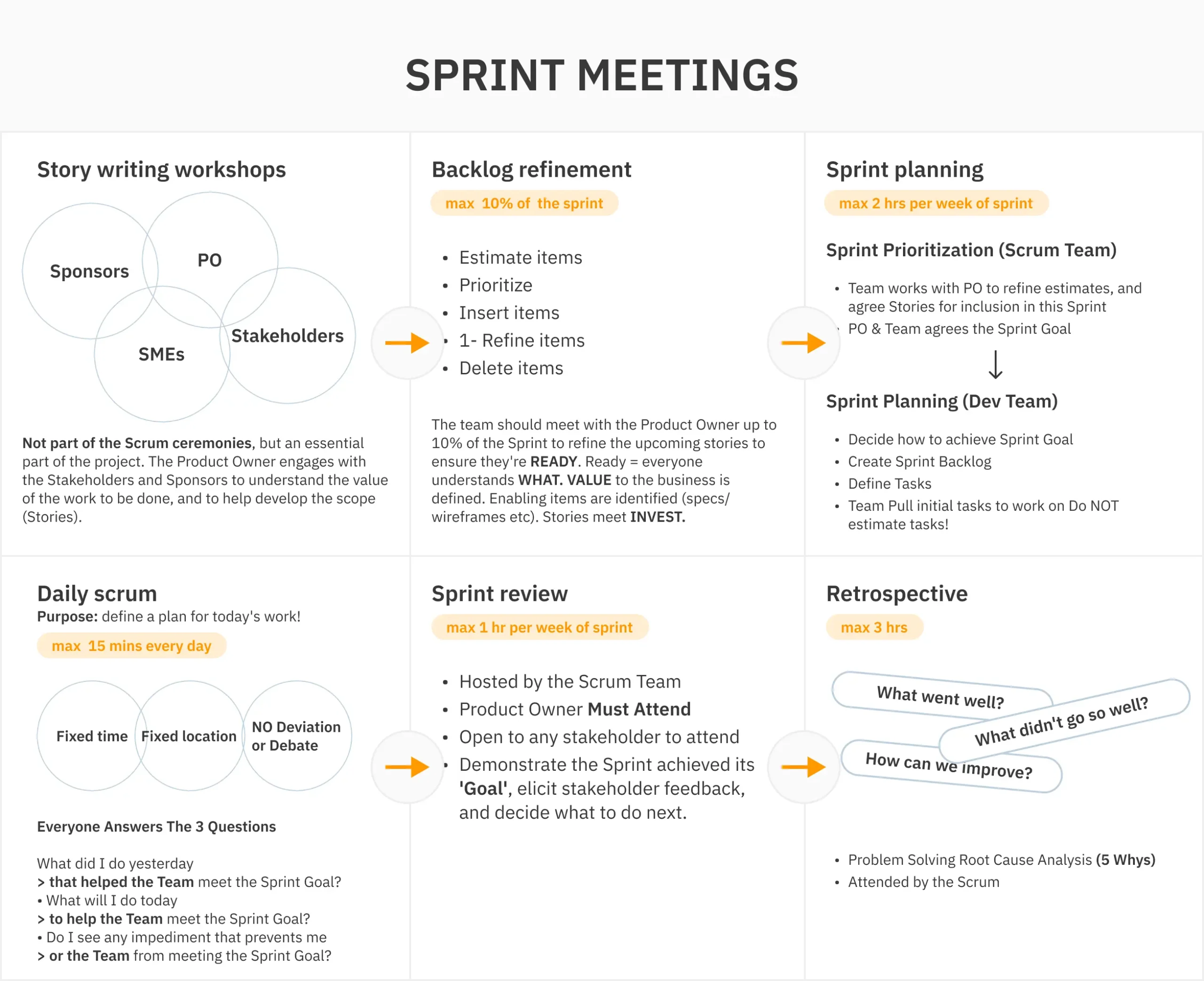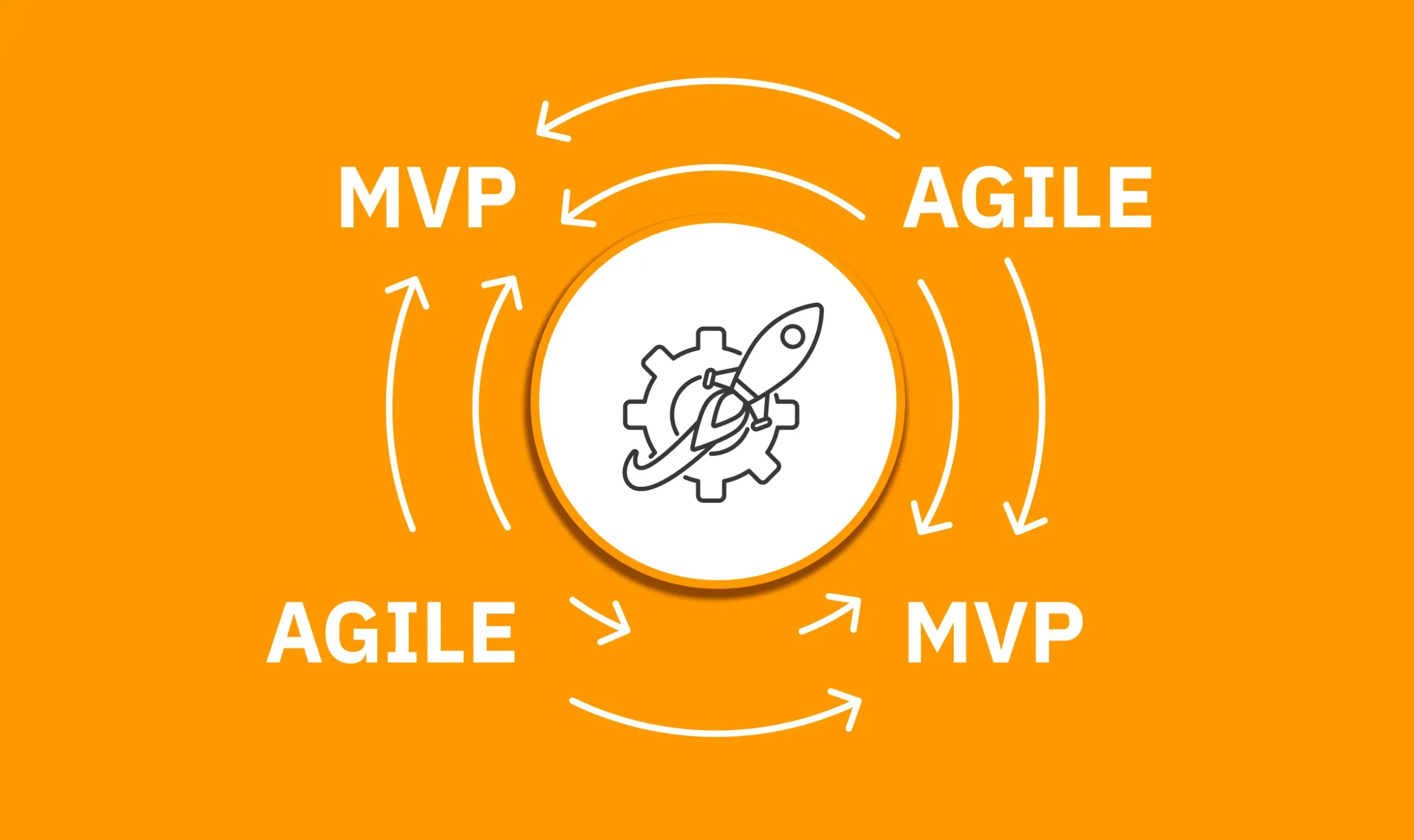The abbreviation MVP in Agile goes for a minimum viable product – a working version with basic functions only, but ready to be used by clients. Its value is not obvious: the market is overloaded with startups, and only one who offers more functions seems to win this severe competition.
However, according to the findings of CB Insights in 2016, 42% of startups failed because had spent all their funds on unnecessary products neglected by the market. This fact reinforced the beliefs of MVP concept fans: there is no need to create an expensive product, but it’s a good idea to test the potential of its basic functionality for lower production costs.
Although MVPs are commonly associated with startups, they are not necessarily used only by them. They are also used by mature companies that want to get feedback from customers on a new good as early as possible. Companies can use MVP when they need to test a new idea or concept. Or they use the MVP approach to gauge interest in a new product. MVPs can help businesses:
- Save time and money;
- Get feedback in advance;
- Quickly and cheaply validate your product idea;
- Focus on the most important features of your product;
- Bring your product to market faster.
This article will define MVP in Agile and explore its distinctive features, meaning, benefits, and best practices. By the end of this detailed guide, you will have a complete understanding of how MVP integrates with project management and Agile methodology.
What Is MVP in Agile?
A minimum viable product (MVP) is a development strategy that aims to create a product with minimal functionality able to satisfy the basic needs of early adopters. The MVP meaning in Agile is to collect user feedback as quickly as possible for further development of the project or decision about its cancelation. The main characteristics of an MVP can be considered as:
- Basic functionality. The version includes only the main functions of the future product.
- User feedback. Receiving feedback for further development of the product is the main producers’ target.
- Scalability. The version contains tools and mechanics laying the foundation for future improvements based on the feedback.
However, you should not define MVP in Agile as an unfinished raw product. It is more like a working prototype, but mass-produced and equipped with a basic feature set. MVP is still a functioning product with a decent user interface that’s enough to solve the average problems of early adopters.
Let’s look at the main difference between an MVP in Agile and a finished product:
| Aspect | MVP | Finished product |
| Investment | Controlled | Much higher |
| Development time | Quick to market | Extensive |
| User Base | Initial users | General market |
| Feedback cycle | Rapid | Post-release |
These key aspects determine what does MVP in Agile stands for and actually means. Agile is a way of bringing a product to life at low costs and high speed, no matter the technologies and details of the development process. It is often based on Scrum and emphasizes rapid development through sprints.
Each sprint is dedicated to a specific goal and typically lasts from one to four weeks. At the end of each, the results are reviewed and analyzed, and priorities are re-evaluated.
Why Agile/Scrum Uses MVPs
The agile Scrum methodology emphasizes delivering functional software in small increments. MVP allows teams to release earlier and reduce risks. This approach ensures stable, controlled, and, thus, successful product development along with its immediate testing in the live market.
Let’s look at the main reasons for using MVP meaning in Agile:
- Access to the market. An MVP guarantees faster time to market and allows companies to quickly test new ideas.
- Economic efficiency. MVPs help optimize resource allocation and focus on core product features.
- Leadership. Correctly developing a profit center meeting all user needs helps bring the final product to the global market. In addition, you can use positive feedback from your first clients. They will help you create a positive image of the product and help with advertising.
- Design. Constant feedback ensures that the final product will be tailored to users’ needs.
However, the main reason for using MVPs is to allow software engineers and development teams to carry out the entire workflow of getting the software into production. The gradual launch of working software confirms that all streams and automated testing are functioning at a normal pace.
By starting with an MVP in Agile, companies can release updates incrementally and learn as they go. A profit center helps you prioritize what users want and avoid creating unnecessary features. The best way to avoid wasting time and money is to start small and repeat. This is why Agile uses an MVP — a simple version of the final product that solves the most important problems.
You can quickly learn what works, what doesn’t, and what exactly users want. You can prioritize future development to expand capabilities, add functionality, implement automation, and more.
With MVP, you don’t waste time and money on guesswork. You make decisions based on facts and feedback.
Best Practices of Agile Development
Statistics show that Scrum is the leading Agile approach, used by 87% of organizations. Let’s look at some of the best Agile practices for implementing Scrum:
- Atmosphere of cooperation. A collaborative environment needs to be created where the product backlog and product vision are co-created by the development team and stakeholders. This creates a shared understanding and alignment between the two parties and ensures the success of the product.
- Daily stand-ups. Stand-ups are short meetings between team members to discuss the progress of a project. These meetings are literally 15 minutes long. Incorporating stand-up meetings into product or project management is an effective way to track progress and keep all team members in the loop with updates.
- Tracking the progress of sprints. You need to create a graph showing the completed work in relation to the total remaining tasks over a certain period of time.
- Communication rules for the team. Developing an appropriate strategy can ensure effective communication. This practice can be especially valuable for teams that work remotely. It ensures transparency and agreement in achieving team goals.

MVP in Agile project management cannot develop effectively if the team does not work according to the above principles. Cooperation, communication, monitoring, and speed are the keys to the success of the future project.
MVP Agile Development Benefits
MVP software offers many benefits to development teams and businesses. As we have found out, MVP is the most important concept in the Agile methodology, which is designed to optimize the development process. Let’s look at the MVP’s main advantages to better realize what does MVP stand for in Agile.
Resources
One of the main benefits of MVP in Agile software is that it allows teams to validate their product ideas with minimal resources. Developers can get a finished product to the global market faster by focusing on early adopters. Minimal resources are no less effective – this approach also collects feedback from early customers and helps to gradually improve the product.
Feedback
Users’ interaction with the MVP in Agile methodology ensures useful feedback. With the help of feedback, you can understand the potential principles of a product operation in the global market.
Users can highlight what they like and don’t like, as well as what additional features they might find useful. In addition to all this, some users may create bug reports. They will help to detect critical errors in the product functionality. Such input ensures that subsequent development will be consistent with the actual needs and preferences of users, rather than the assumptions and subjective assessments of the development team.
Fast Start to Win Rivalry
Another benefit of early feedback is the competitive advantage a company gains by entering the market early. If your business is developing in a new and relevant industry, MVP can help you take a strong leading position in the global market. Early users can publish feedback on your working product, thereby creating a positive impression in the general market and attracting more users.
Market Understanding
The MVP meaning in Agile also covers the most exact and correct understanding of your target markets. Often, initial product ideas are based on what developers and stakeholders think will be valuable to users. However, these assumptions may not always accurately reflect the actual needs of the target market. Early feedback from real users ensures that you get valid valuable information instead of guessing. Reviews from real users often offer specific data that shows which features and why are valued the most. This helps in global market analysis and will speed up the product’s launch.
Lower Development Costs
Developing 30% of all basics for an MVP costs less than developing 100% of the features for an ideal application. Thus, the MVP will help you allocate your budget wisely and introduce more functionality into the final product for less money.
Reducing task volume means the team can work faster. Each team member saves some time to identify and propose solutions to problems in the early stages of development. Consequently, this leads to faster iterations and shorter development cycles – the key targets of any Agile methodology. Saved funds can be redirected to other important areas of the project. For example, researching global market feedback, marketing, product improvement, and advertising.
Risk Reduction
New projects are always accompanied by various risks. Some of them are directly related to the time and investments they take to be finished. MVP in Agile project management helps reduce project development time and risks. Some of them are listed below.
Missing Deadlines
Deadline troubles are a common risk in new projects, which is caused by ambitious scales and a weak project development strategy. What is MVP in Agile for? To tighten up your deadline detaining. Developing an MVP helps focus only on delivering core functionality. This approach reduces initial development time and allows the team to cope with the release of the final product faster.
The iterative process of Agile also means that teams can adapt to changes and obstacles more effectively. The risk of missing critical launch dates is greatly reduced by breaking the project into manageable sprints and making changes on time.
No Planned Budget
Traditional methods often involve complex feature development on a minimal budget. This results in higher costs and potential budget overruns. The MVP in Agile focuses on building a product with only the clear and predictable core features that are needed for first user testing. This minimizes potential costs and allows you to better manage your budget. As the project progresses and additional features develop, the costs can be controlled as effectively as before.
Focusing on the Wrong User Needs
This risk may result in the product’s failure to meet market expectations. You can define MVP in Agile to attract users at an early stage. This way, the team will collect comprehensive feedback on key features. Feedback helps to understand the real preferences of the target audience and direct development to improve the functionality of the product.
Iterating based on real user data will help the team avoid unnecessary investments in features that do not provide value to their audience. With this approach, you can be 100% sure that the final product will be focused on the basic needs of the global market and your team will avoid expensive Incorrect decisions.
All these benefits of MVP in Agile methodology will help your project develop smoothly and effectively.

How to Build an MVP with the Agile Methodology
Before launching the final product, producers need to focus on creating a profit center. However, the investors and producing team may face some difficulties in the process. The correct profit center and correct analysis of related feedback from early users will help create a high-quality final product for the global market. Accordingly, your startup can take a leading position in current business sectors.
To effectively create and define MVP in Agile, you need to follow these steps:
- Identify and understand your target market. Determine who your product’s average user is. Understand their needs, problems, and expectations. This way you will find out why MVP is valuable to your audience.
- Define your value proposition. Clearly state the key benefit or problem your product solves. This helps keep the MVP’s focus on delivering real value to your customers.
- Select key features. Prioritize your MVP’s feature list. Focus on core features that solve the core problems – they are what does MVP stand for in Agile. The demanded functionality will help you to cover a larger audience and get bigger market feedback.
- Design and develop an MVP. Start the development process with selected key features. Split each one into tasks and organize them in sprints for the most rapid development. Build your MVP in sprints and quickly make adjustments based on feedback.
- Offer real users to test. Release an MVP to a small subset of your target market. Observe how they use the product and collect feedback. Improve those functions that have received bad scores and take into account user bug reports.
- Analyze feedback. Evaluate feedback from early users. Identify patterns to understand what needs improvement.
- Plan your iteration. Based on feedback, prioritize new features or improvements. Plan the next MVP development sprint.
Continue testing, collecting feedback, and repeating all the above points in a circle. Each cycle should be aimed at improving the product and should bring it closer to the current needs of the global market.
Remember that developing a minimum viable software product in Agile is not a linear process. It focuses on learning and adaptation. Think of the steps above as a single, repeating cycle, with each iteration refining and improving the product.
Conclusion
This article gives a general answer to the question, “What does MVP stand for in Agile?” MVP is a strategy focused on delivering an initial version of a product with a minimum set of features. Such a product helps to collect feedback from early users of the product, improve it, and expand its functionality during further development.
Agile MVP is used to achieve early time-to-market terms, cost efficiency, and user-centric functionality. Before launching, it is important to use MVP in Agile methodology to correctly create a product development concept. Continuous feedback plays a key role in its further expansion and adjustment. Finally, sprint teamwork helps speed up the process of introducing the final version of the product to the global market. Therefore, starting with MVP is one of the best strategies today to effectively and safely launch your startup.
FAQ
MVP in Agile project management is a great choice for software development because it allows teams to quickly release a functional product, gather early user feedback, and make informed decisions about future development. This approach minimizes risks and optimizes resource allocation. In this way, the development of the product can be guaranteed in accordance with the needs of users. Therefore, MVP is a good solution for your software project.
Yes. An MVP can completely change its concept during the development process. The iterative nature of Agile means that user feedback and market conditions can lead to adjustments to the MVP's features and capabilities. Changes to the MVP are necessary to ensure the product remains relevant and valuable to users.
MVP fits into the Agile methodology seamlessly. MVP development is consistent with Agile principles of iterative development, continuous feedback, and incremental delivery. This allows teams to focus on frequent product updates. This approach will facilitate user-centered functionality integration and reduce development risks.




